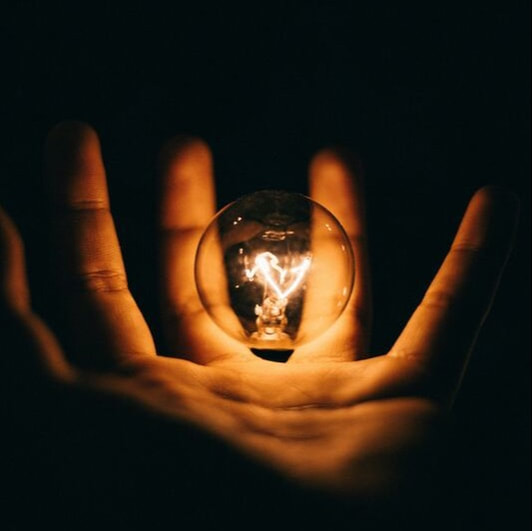 Photo by Rohan Makhecha on Unsplash Muddy water, let stand, becomes clear. - Lao Tzu This blog post is part of our Yoga Sutras series. Want to start at the beginning? Sutra 1.2 - योगश्चित्तवृत्तिनिरोधः - Yoga Citta Vrtti Nirodhah Yoga Is Calming the Fluctuations of the Mind This is a very simple and powerful yoga sutra. In fact, Swami Satchidananda wrote, “for a keen student, this one sutra would be enough.” (Satchidananda, 23) Again, let’s break this apart word by word to understand it better. We’ve already discussed yoga extensively in the previous sutra. It is both the process and the end result. But Patanjali defines yoga further than that in this sutra. Citta is our consciousness, which can be divided into three parts: mind, intellect, and ego. I'll use the word mind sometimes in this post to make certain sentences more comprehensible in English. But let's note that the Sanskrit word citta actually refers to the sum total of mind + intellect + ego. Our consciousness is easily clouded by thinking. Now, I’m not saying thinking is bad per say. We need to think in order to eat, find shelter, and create meaning. That is our monkey mind. Constantly moving and interacting through our senses with the outside world (and our inside world) to obtain or avoid things. When we never give the citta time to be still, it can be difficult to distinguish between what really matters and all the rest. In this condition, we end up chasing after material things that give us temporary happiness but ultimately, lead to disappointment. They don’t fulfill us in a lasting, permanent way. Chasing after the senses by either trying to obtain or avoid things, is the function of the citta. This function is called vritti, or the fluctuations of our mind. Just like a machine will degrade faster when it runs all the time, our nervous system gets depleted when it’s always “on”. More than that, it’s impossible to discover the inexhaustible source of contentment within us while our consciousness is constantly chasing after and pushing away material things. The way to “power down” our citta is by controlling our vritti. In yoga, this control - also translated as restraint or cessation - is called nirodhah. (Do you recognize this word anywhere on this blog?). A common analogy made in Yoga Sutra commentaries is that the mind is like a wild horse tied to a chariot. As the charioteer, we must use the reins - our mind - to discipline the horse to take us safely where we need to go. Put together, Yoga Sutra 1.2 is telling us that yoga is attained and practiced by calming the fluctuations of our mind. In this state, the citta is clear and we are able to distinguish our true nature, which is total peace and contentment at all times. I know that sounds lofty. And it is. But really, for what other purpose are we on this planet, if not to discover peace and contentment? This was a major turning point for me, personally. When I began practicing yoga, my mind was totally out of control. I was depressed, suffered from panic attacks, and did not like myself very much. I am still working on it but after fifteen years of regular yoga practice - especially after meeting my guru and discovering the Yoga Sutras of Patanjali - I can honestly say that I am in much better control of the fluctuations of my mind. This is why you hear yoga teachers like a broken record, “yoga is more than yoga poses.” Yes, many of us start at the poses. We feel amazing after practicing yoga poses. But continue on this path and you will discover the power within to control the fluctuations of your own mind. That is yoga. << PREVIOUS BLOG POST IN YOGA SUTRA SERIES NEXT BLOG POST IN YOGA SUTRA SERIES >> In which situations is it easiest to control our mind's fluctuations? In which situations is it most difficult?
Why is it more difficult in certain situations than in others?
0 Comments
Leave a Reply. |
Archives
July 2024
About
Just some thoughts about yoga as I go... Categories
All
|
FIVE KEYS YOGA
|
WHAT OUR CLIENTS SAYFive Keys is fantastic! The studio is lovely and soothing, and the teachers are very caring and attentive. |
I've ... probably been to 25 different yoga studios. This is one of the most welcoming, calming spaces with very talented instructors. |
I love this yoga studio. It's a great balance of a good workout and relaxation and feels like a real community. |
An ideal studio for someone new to yoga. |

 RSS Feed
RSS Feed
